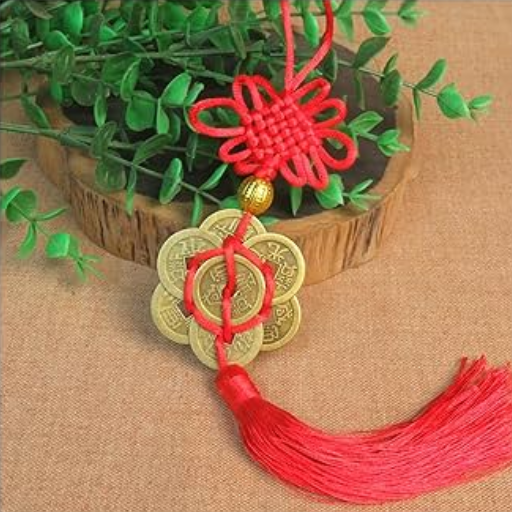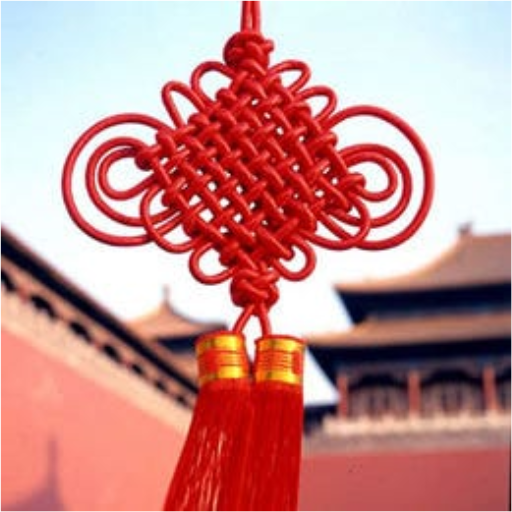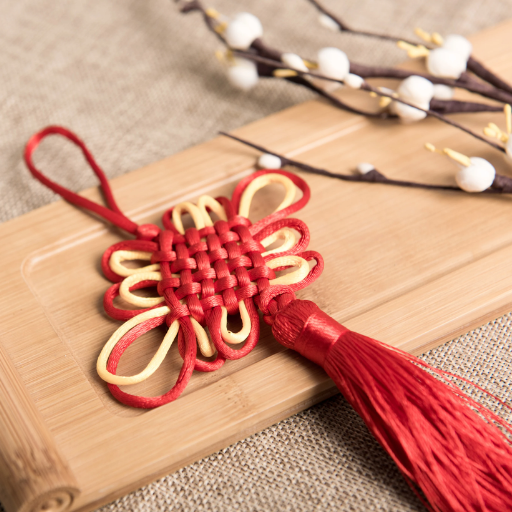Introduction to Chinese Knots

Chinese knots represent one of the most sophisticated and meaningful decorative arts in Chinese culture. These intricate and beautiful interlacing designs are crafted from a single piece of cord or thread, creating stunning patterns that have captivated people for centuries. The art form combines aesthetic appeal with deep cultural significance, making it a perfect window into understanding Chinese traditional values and artistic expression.
What is a Chinese Knot?
A Chinese knot is a traditional handicraft object that has played an iconic role in Chinese cultural heritage for many years. This ancient art form began earning a reputation as early as the Tang and Song dynasties, with new designs flourishing during the Ming and Qing dynasties. Often called “the Chinese knot of peace” or “good luck knot,” these decorations serve both functional and symbolic purposes.
Key Characteristics:
- Made from a single continuous thread, symbolizing unity and wholeness
- Decorated with silk or nylon strands in complex patterns
- Each knot carries specific cultural meanings and beliefs
- Used in festivals, ceremonies, and daily decoration
Historical Significance of Chinese Knots
The historical journey of Chinese knots spans over a millennium, evolving from practical fastening tools to sophisticated art forms. Originally used for securing clothing and personal items, these knots gradually transformed into decorative elements that adorned traditional garments and ceremonial objects.
During the Tang and Song dynasties, Chinese knots gained prominence as artistic expressions, while the Ming and Qing periods saw the development of more complex designs and patterns. Today, they continue to play important roles in traditional festivals like the Spring Festival and wedding ceremonies.
Materials Used in Handmade Chinese Knots
The choice of materials significantly impacts both the appearance and cultural significance of Chinese knots:
| Material | Characteristics | Cultural Significance | Modern Usage |
|---|---|---|---|
| Silk Threads | Smooth texture, vibrant colors, premium quality | Traditional choice representing Chinese heritage | High-end decorative pieces, ceremonial items |
| Nylon | Durable, water-resistant, cost-effective | Modern adaptation for practical use | Everyday decorations, outdoor applications |
| Polyester | Long-lasting, colorfast, affordable | Contemporary choice for mass production | Commercial products, teaching materials |
Popular Types of Chinese Knots

Double Coin Knot
Symbolizing wealth and prosperity, this knot resembles two interlocking coins. It’s one of the most popular designs for gifts and decorative purposes.
Butterfly Knot
Representing grace and transformation, this elegant design is favored for jewelry and personal accessories.
Ball Knot
A compact, spherical design that serves both decorative and functional purposes, often used as a starting point for more complex patterns.
Four-leaf Clover Knot
Featuring four circular patterns, this knot symbolizes luck and protection, making it popular for auspicious occasions.
Endless Brocade Knot
Used primarily in formal applications and traditional clothing, this pattern represents continuity and eternal connection.
Auspicious Knots: Symbolism and Meaning
Chinese knots carry profound symbolic meanings rooted in traditional beliefs and cultural practices:
- Endless Knot: Represents eternal love, long life, and the interconnectedness of all things
- Double Coin Knot: Symbolizes wealth, unity, and prosperity
- Mystic Knot: Brings permanent happiness and peace
- Flower Knot: Represents happiness and good fortune, popular in wedding decorations
Step-by-Step Guide to Basic Techniques
Materials Needed
- Durable cord or thread (nylon or silk recommended)
- Scissors for trimming
- Optional: Beads or tassels for decoration
Basic Technique Steps
- Create the Initial Loop: Form a symmetrical loop as your starting point
- Apply the Weaving Pattern: Follow traditional patterns, maintaining consistent spacing
- Control Tension: Keep even pressure throughout the knotting process
- Secure the Knot: Tighten all loops evenly and remove excess slack
- Finishing Touches: Trim excess material and add decorative elements
Modern Applications of Chinese Knots

Home Decoration
Chinese knots have found new life in contemporary interior design:
- Wall hangings that combine traditional craft with modern aesthetics
- Lighting accessories and curtain tiebacks
- Drawer handles and decorative accents
- Feng shui applications for positive energy flow
Fashion and Accessories
The revival of traditional Chinese clothing (Hanfu) has increased demand for authentic Chinese knots:
- Traditional costume fastenings and decorations
- Modern jewelry incorporating classical patterns
- Fusion designs combining Eastern and Western elements
- Cultural appreciation accessories
Gifts and Ceremonial Uses
Chinese knots remain popular choices for meaningful gifts:
- Festival decorations, especially during the Chinese New Year
- Wedding favors and ceremonial decorations
- Cultural exchange gifts and souvenirs
- Educational tools for cultural appreciation
Preserving the Craft of Knot Making
Efforts to preserve and promote Chinese knotting have intensified in recent years:
| Preservation Method | Description | Impact |
|---|---|---|
| Government Support | Funding for craft centers and artisan programs | 20% increase in handicraft centers |
| UNESCO Recognition | Listed as intangible cultural heritage | International awareness and protection |
| Digital Platforms | Online tutorials and social media promotion | 30% increase in global interest |
| Educational Programs | Workshops and cultural exchanges | Broader accessibility and learning opportunities |
The Future of Chinese Knot Art

The future of Chinese knot art looks promising, with several trends shaping its evolution:
Technology Integration
- E-commerce platforms expanding global reach
- Social media tutorials make learning accessible
- AR applications for interactive learning experiences
- 3D printing possibilities for complex designs
Cultural Fusion
- Integration with contemporary fashion and design
- Cross-cultural artistic collaborations
- Modern materials and traditional techniques
- Environmental considerations in material choices
Resources for Learning More

Educational Materials
- Books: “Chinese Knotting” by Lydia Chen, “The Complete Book of Chinese Knotting” by Cao Haimei
- Online Platforms: YouTube channels, Skillshare courses, Udemy workshops
- Cultural Centers: China Knot Art Center in Beijing, local cultural institutions
- Interactive Apps: Craftsy, Creative Knots AR, Beads Making Made Easy
Community Engagement
- Social media communities (#ChineseKnottingArt, #MacrameInfluencedKnotting)
- Local workshops and cultural events
- International festivals and exhibitions
- Academic resources through Google Scholar and JSTOR
Frequently Asked Questions
What is the cultural significance of Chinese knots?
Chinese knots are deeply rooted in traditional Chinese culture, symbolizing good fortune, prosperity, love, and protection. They serve as both decorative art and spiritual talismans.
What materials are best for beginners?
Nylon cord is recommended for beginners due to its durability and affordability. Silk can be used for special projects once basic techniques are mastered.
How long does it take to learn Chinese knotting?
Basic knots can be learned in a few hours, while mastering complex patterns may take months of practice. The key is starting with simple designs and gradually progressing to more intricate patterns.
Are Chinese knots used in feng shui?
Yes, Chinese knots are commonly used in feng shui practice to attract positive energy and ward off negative influences. Their placement and design are believed to enhance the flow of beneficial chi in living spaces.
Reference Sources
- Carnegie Mellon University: Chinese Knotting – Introduction to Textile Media
The course is tailored to the Precious and creation of Chinese knots and beautiful ornamentations with particular emphasis on symmetrical patterns.
- Williams College: Chinese Knotting for Joy
Caters to the meaning of Chinese knots, specifically to purchasing pure joy, and also brings out a few negative beliefs about its connotations.
- Ohio State University: Chinese Knotting
Offers the definitions of some typical and easy-to-understand examples of basic Chinese knot patterns and discusses their role in culture, again, in great detail.







